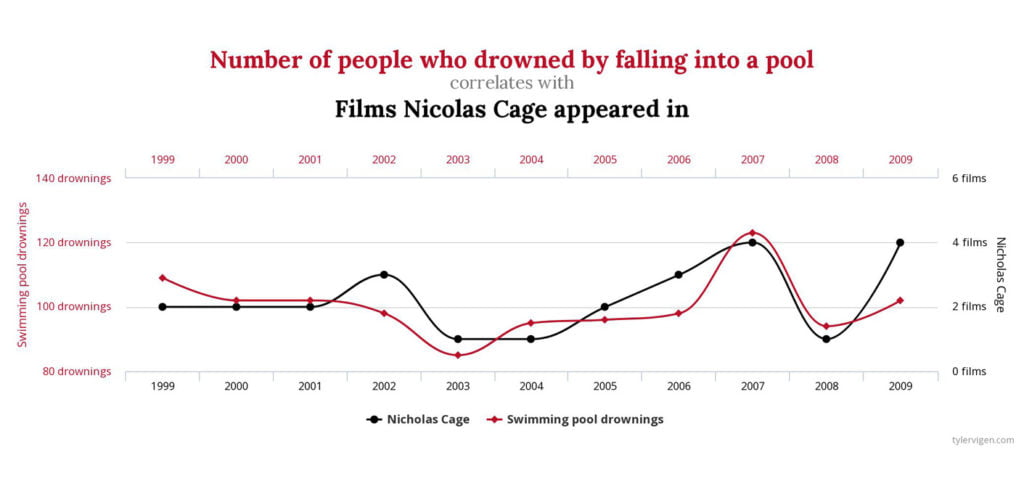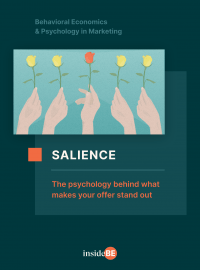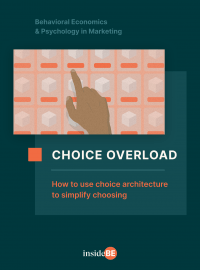The Scientific Secret to Viral Content: Break Common Sense

Can you create an animation and sell it online for millions of dollars? Are you allowed to shout about your business failures out loud in public? Common sense tells us no, “but the science of interesting” says yes! What are the principles of interesting content and how can you apply them to your content creation strategy?
In this article, you’ll learn about:
- The core commonality among viral content;
- Science-backed research to support what makes something interesting; and
- Practical tips and tricks on how to create shareable content.
As a marketer, your goal is to make your ideas spread like wildfire. Ideas that spread, win. Ideas that don’t, die. This basic principle of marketing was introduced to the world by Seth Godin. Godin starts his lectures with the simple story of sliced bread.
Otto Rohwedder invented the first automatic bread slicing machine back in 1917. But nobody cared. It wasn’t until 1930 when Wonder Bread successfully marketed and spread the idea of sliced bread that it became “the best thing.”

Discover ground-breaking ideas and fascinating solutions.
No matter how good your idea, product, or business may be, it won’t win if it doesn’t spread. This is why you, as a marketer or entrepreneur, need to know the scientific secret behind creating shareable ideas. Not every piece of content needs to go viral. And not every company needs to post cat videos in order to gain traction online. But you do need to know what makes an idea interesting.
So what’s the common thread among most viral content? They break common sense.
Interesting ideas deny assumptions
This simple truth is the foundation of a research paper published by sociologist Murry Davis in 1971, in which he explores the Sociology of Phenomenology. Davis’ work is one of the most influential pieces of research in business academia and a must-read for most business doctorate programs. The research lays out The Index of the Interesting, 12 principles that classify why humans find an idea interesting, and thus, share it.
We explored a few of these principles in our first piece on shareable content. Now we’re digging deeper with more examples on how to apply them to your content creation strategy.
How to apply the viral secret to content creation
The goal is to view your own marketing efforts through the lens of Davis’ principles. Consider each principle in terms of what makes it interesting from a psychological perspective — what happens in the human brain when an idea presents such a conflicting message? Then ask yourself, do the ideas and content I create challenge a commonly held belief? Can I flip the script of what my audience takes for granted?
Here goes. First the principle, then the how-to application.
1. Stabilization: When stability collapses
A capitalist society feels permanent, but then again, so did the Roman Empire. The thought that something as permanent as one’s own nation could abruptly dissolve into oblivion, particularly nations that have little experience with boots-on-the-ground war or dictatorship, triggers interest. First a mix of blasphemy and disbelief, then measured intrigue into how that could possibly be the case.
What seems to be a stable and unchanging phenomenon is, in reality, an unstable and ever-changing phenomenon.
The stabilization principle of interesting:
- What seems to be a stable and unchanging phenomenon is, in reality, an unstable and ever-changing phenomenon.
- What seems to be an unstable and ever-changing phenomenon, is in reality, a stable and unchanging phenomenon.
That’s the assertion behind Karl Marx’s claim in his book Capital — the social organization of bourgeois society, assumed at the time to be permanent, was in fact on the verge of transformation. Marx’s ideas spread so far and wide, they became an ism. Marxism is one of the major socioeconomic ideas to come out of the 19th century and it caused such intrigue thanks to the stabilization principle.
How to apply it to your content strategy:
The AHA moment of the stabilization principle comes when a stable idea or concept is presented as flawed or weak — on the verge of change. Most industries have historical ways of doing things that are just accepted as facts. Non-changing, impossible to destabilize facts.
An industry on the verge of transformation — one so fresh many are still trying to wrap their heads around the concept — is the art world and the NFT disruption. Something as concrete and stable as a physical piece of art having value — Michalangelo’s David sculpture, original Bansky graffiti — is becoming digital. Like this NFT (non-fungible token) that just sold for $6.6 million.
Salience
Everything that stands out, is novel, or seems relevant, captures people’s attention, and makes it more likely to affect their thinking and actions.
Tech writers, culture columnists, mainstream media, art fanatics, design studios — all these industries and outlets are creating content about NFTs. Your job as a content creator is to find the next NFT and break the story, or at least have an interesting angle early on amidst the disruption buzz.
Try this:
- Identify the golden rule of your industry or sphere of influence. Something that has been true and stable for as long as your industry has existed. Is there a way to demonstrate the instability of that taken-for-granted truth? Can you find something on the verge of collapse or transformation?
- Poke away at a stable phenomenon in your industry and show your audience a new way to look at the future. What’s the next big thing in customer service? What comes after 3D printers? Is there a trend of the 21st century that seems permanent but is actually destined to collapse?
2. Correlation: When the alphabet changes religion
There are some bogus correlation ideas out there, yet no matter how silly they seem, they still pique our interest. How’s it possible that the number of people who drowned by falling into a swimming pool correlates so perfectly with the number of films Nicolas Cage appeared in? Or that eating organic food causes autism.

Source: Tyler Vigen – Spurious correlations
Correlation does not imply causation.
The correlation principle has a cheap side of interesting — flippant, but interesting connections. And a virtuous side of interesting — legitimate co-relations you never saw coming.
The correlation principle of interesting:
- What seem to be unrelated (independent) phenomena are, in reality, correlated (interdependent) phenomena.
- What seem to be related (interdependent) phenomena are, in reality, uncorrelated (independent) phenomena.
A terrific example of fascinating phenomena that appear independent but in fact are interdependent is the rise and fall of literacy and the correlation of God or Goddess worship. American brain surgeon turned writer, Leonard Shlain, argues in his book, The Alphabet Versus the Goddess, that learning written languages — a process that requires the brain to think in linear, sequential terms, as opposed to non-written languages which require the brain to think holistically — alters brain function to favor masculine characters over feminine ones.
What seems to be unrelated — written language and goddess worship — are in reality correlated.
How to apply it to your content strategy:
The correlation principle has two content routes: the cheap and quick (unrelated phenomena that appear correlated) and the fascinating (unrelated phenomena that are actually correlated).
The cheap and funny approach will almost always gain traction if you can find the right angle. It doesn’t need to be a completely outrageous correlation (Nicolas Cage and swimming pool deaths), but this principle has some wiggle room for fun.
The better, harder, but even more interesting approach to applying the correlation principle to content is to find actual shocking co-related phenomena relevant to your field.
Try this:
- Follow a statistical analysis in your industry that your audience knows and trusts. Mortgage interest rates in real estate, rain or snow distribution in meteorology, university degrees in education — any form of statistical data relevant to your industry.
- Now find an interesting correlation (ideally causation). If you can find a meaningful correlation of statistical data in your industry, now that’s interesting.
3. Impact: When too many good things is bad
More is more, right? Instincts say the more choices we have the better off we are, the more likely we are to find something just right for us. But the psychological principle of choice overload tells a different story.
Choice overload is a behavioral principle that makes it challenging for people to make a decision if presented with too many options. This behavioral science principle relates to Davis’ impact principle of interest, also called the “covariation principle” in his research. The idea that an abundance of choice might actually have a negative impact on one’s mental state — and in business, one’s decision to purchase a product — is interesting, because it’s counterintuitive.
You can learn more about choice overload and what you should be mindful of when presenting your product or service to customers here.
Head & Shoulders, the shampoo brand that made dandruff sexy, was well aware of the impact of choice overload. In addition to making consumers believe glamor icons like Sofia Vergara use off-the-shelf anti-dandruff shampoo (also counterintuitive), they managed to make customers feel more empowered by giving them less choices.
The impact (covariation) principle of interesting:
- What seems to have a positive impact (covariation) between phenomena, in reality, has a negative impact (covariation) between phenomena.
- What seems to have a negative impact (covariation) between phenomena, in reality, has a positive impact (covariation) between phenomena.
The scientific definition of covariation is the always positive or always negative relationship between two quantitative variables — one variable tends to increase (or decrease) in value as the related variable tends to also increase (or decrease) in value. In this example, it’s assumed that an abundance of choice leads to happy decision making (ie: more purchases). But in reality, choice overload is so frustrating, it can be debilitating.
How to apply it to your content strategy:
The power of positive thinking, popularized by motivational speaker Tony Robbins, says, “if we get the right emotion, we can get ourselves to do anything.” Science tells another story. The story of the smothering impact of positive thinking and how in some people an effort to suppress negative emotions further stimulates the fear center of the brain.
The idea that positive thinking might actually negatively impact your emotional state triggered a watershed of interest, research, and books. Positive thinking potentially having a negative impact on emotions nicely demonstrates the impact principle.
The power of positivity is a good place to start for exploring the impact principle in terms of content creation. Most industries have a service element to them no matter the end product. You have to serve to sell. But at what point does overselling, being overly helpful, or overly positive actually have a negative impact on the final outcome — i.e. the sale?
From another perspective, how can something that intuitively has a negative impact on sales actually have a positive one? Take the fail forward movement as an example (promoted by just about every business outlet like Inc, Entrepreneur, and Forbes).
Rather than sweeping failure under the rug, there’s a significant movement to shout about your failure and how you learned from it. It demonstrates humiliating growth and transparency. Something that, intuitively, should have a negative impact (shouting about how much you suck) might actually have a positive impact (positive impact on sales).
Try this:
- Identify an over-the-top, smothering characteristic of your industry. Something that appears to be harmless and friendly, but in reality might tire your audience (or the other way around – something that seems to be harmful actually boosts your sales). It can be an overly attentive server at a restaurant or a realtor that can’t turn off the million dollar smile.
- Brainstorm how that overly saturated approach to positivity might actually damage the customer’s perspective. Do well-intended, yet painfully generic replies on every single customer review have a positive or negative impact on sales?
Hungry for more examples and ideas for creating viral content? Read more here.
Key Takeaways
- Identify areas ripe for disruption. Look for emerging trends within your industry and related spaces. Apply the stabilization principle to your research — what’s a taken-for-granted, stable, and unchanging aspect of your industry that’s either in the midst of disruption or ready for disruption? Build a content strategy around this topic.
- Expose unexpected correlations. Look for data from your industry and find surprising and counterintuitive facts. Show how elements that are expected or understood to be unrelated are in fact correlated.
- Talk about failing forward. Failing forward is a content trend still very relevant today because it evokes the Impact Principles. Take the risk of being vulnerable and share information about the inner workings of your company. Do this by telling stories of missteps and how you grew from them. Strike a balance between oversharing and positive exposure to gain content traction.






